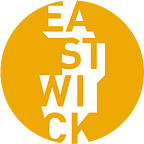Six Marketing Lessons from Five Agencies, Four Panels, Three Clients, Two Consultants and One Week in London
By: Jayne Scuncio
Technology innovation ecosystem knows no boundaries. From product conceptualization and seed funding to company launch and a first sale, it happens everywhere in the world. Last week the Global Mobile Internet Conference (GMIC) was held in Tel Aviv, Japan relaxed its rules on investing in financial ventures to kick start its fintech revolution, Apple launched its new iPhone SE with hopes of success in India, and I was in London to learn more about its tech trends impacting media.
Communications agencies have an endless opportunity to connect a client’s message to consumers, media and partners around the world. If they are to take full advantage of those opportunities, it’s important for communications professionals to continue educating themselves on the differences in PR best practices across industries, countries, and even cities. To stay up to date on one of our most important markets outside the US, I traveled to London last week to meet with some of our smartest partners. Here are six things I learned from five agencies, four panels, three clients, and two consultants during my one week in London and how they may affect the work for a PR professional.
- Hot technology markets are ubiquitous.
A hot trend is a hot trend, no matter where the events occur. Technology industries top of mind for reporters in both London and San Francisco include security, wearables, and health tech. A commonality across these sectors and an important insight to note as a PR person: all three prompt questions regarding consumer data and privacy, they are futuristic, and are ripe for startups and innovation. Whatever industry your client is in, think about these three trends and how you can weave them into your storylines for press.
2. London investors are on the heels of Silicon Valley’s.
Series A rounds in the US peaked in 2014, and now we’re seeing more “Down Rounds.” On the other hand, in Europe, 2015 was a record year for Series A rounds, up 12 percent from the year before, and 2016 is following suit, with A rounds up 38 percent year-over-year for January and February (versus 19 percent up in the U.S.). Is London poised to take off next year the way San Francisco did last year? But UK reporter’s current lack of interest in funding, valuations, and salaries in the US could translate into a similar sentiment when the trends take hold in the UK. That could spell trouble for PRs and could event create a backlash around the high-salaried CEOs and their companies.
3. Publishers on both sides of “the pond” are being impacted by changing consumer and advertising trends.
I attended The Guardian Changing Media Summit and speakers from brands, advertising and design agencies, and technology companies discussed the industry changes impacting them. Adblocking, viewability and the death of mobile advertising were discussed as critical roadblocks to a brand’s ability to build trust with the consumer. As these trends affects our target buyer — the CMO- it’s critical that PR people stay up-to-date on advertising tech that can change our clients’ pains and priorities.
4. US companies can still count on product news.
London-based PR pros say that’s not the case for their clients. Typically skeptics of marketing news, UK reporters have a hard time choking down a story dedicated to helping sell a company’s product. Our friends at agencies like Chameleon get around this issue by commissioning surveys or reports to back up claims made by product marketing. This has been a requirement for earned placements in the UK for nearly 10 years, but based on rumblings from press I bet we’ll be seeing more of this in the US press and will need to educate our clients about what it takes to land product news.
5. Event success differs in San Francisco versus London.
Europe draws US companies to large scale conferences like Web Summit, RetailWeek and CeBIT, but our agency partners in the UK say they are becoming too big for clients to standout or require fees to speak. Instead, US and UK communications experts have begun to recommend companies host their own events — but with local differences. In the US we’ve had success hosting salon dinners that bring together influential people within one market to debate around an industry trend. In the UK, editors would prefer to go home to see their families instead of attending a dinner with executives. One-on-one meetings are preferred and news is always required to line up introductions during a city press tour.
6. Integrated services are growing quickly!
PR is now so much more than just PR. Agencies like Hotwire are creating separate in-house marketing and content arms to address opportunities for brand, creative and social strategy work. These forms of communication are more critical than ever to tell a cohesive message across audiences and channels. Eastwick also has its Digital Brand Lab.
Communications experts all over the world are continuing collaboration through programs like the Global PR Network of independent agencies. How do you see regional and international differences across media and tech affecting the way we work? I’d love to hear from you! jayne@eastwick.com
